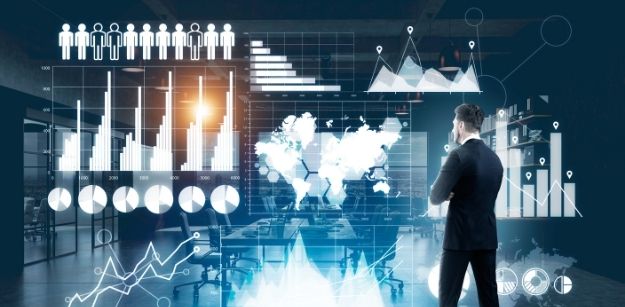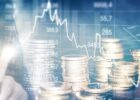No one could have predicted the impact of COVID-19 when it first showed up on our televisions and social media. The subsequent quarantine measures as well as the impact this had on the restrictions we had on travel effectively crippled life as we knew it.
It’s been about a year now since the virus started this worldwide pandemic. A year of people living inside homes they’ve been unable to leave for fear of their well-being.


But what does this then mean for our economies? With the world at large shackled by the virus and the vaccines only now being distributed, how has our economy fared and what kind of insights can we gain from this event?
The different industries
As with most things, it’s not as simple as looking at it retrospectively. To see it as it is, it is important to see how each component of the economy was affected and what measures were taken.
This will, in turn, allow us to observe how the sequence of events led to our current situation.
So let’s proceed to break down how this affected the main financial industries and maybe then it can give us a glimpse of how the coronavirus took the world by storm.
Banks
Seeing as how banks are so involved with the finances of the private sector, it’s easy to understand why they were some of the first to feel the panic we all eventually went through.
Earlier on, Finance Watch warned that easing bank regulations will only exacerbate the situation, adding that this will only increase the risks of a financial crisis. That’s despite the current health crisis the world was facing already.
As such, European bank regulators and supervisors were able to negate the negative effects of the pandemic by promoting financial stability within their industry. Of course, their efforts were helped by the support of their own governments.
People
The most immediate impact was felt by the average working citizen. With the consecutive restrictions on travel, as well as the quarantine measures that were put into place, we saw a lot of job loss and loss of overall job security.
What this did was create a chain reaction in loss of buying power as well as the loss of channels to spend on acquiring necessary goods.
Eventually, we did see how mobile payment solutions are on the rise. With all the restrictions we were under, these payment solutions allowed businesses and consumers alike to continue with some normalcy.
The market
Knowing how badly the market fluctuates, you can only imagine how scared the marketers were during this period. The volatility of the markets during this period triggered a landslide of negative outlooks on the market which made decision making quite hard.
Thus, supervisors were told to keep as close an eye as possible. That’s because the closing of the market, as practical as that seemed, was deemed too costly to even be considered as a backup plan.
Fortunately for them, a lot of businesses were able to adapt to the new normal with the introduction of more payment solutions and delivery services. This allowed marketers more room to maneuver.
Global economy
The global economy was already a little shaky before the pandemic hit. When it did, we saw a wave of panic hit those involved with the policies and management of economic institutions.
As such, it was deemed necessary for governments to provide some form of a bail-out that would come in the form of stimulus packages. With these efforts, it was predicted that the losses sustained during the pandemic should be minimized.
Of course, this was not as smooth in practice. From policy troubles to outright public disapproval, hindrances towards these stimulus packages have prevented their timely release. What’s important though is that they are released ultimately so as to help the average citizen.
Timeline
Now that we’ve seen how each of these different sectors was affected, we can more accurately describe how the sequence of events turned out the way they were. It’s an important step if we’re to do an analysis of the economy as it stands now.
We’ll break the timeline down into 4 points namely, the initial impact, what happened immediately after, how we adapted to the new normal, and finally to where we stand now.
Initial impact
The initial impact of the coronavirus pandemic was immediately felt. Across all sectors, the numbers were looking despondent as travel restrictions were implemented and stores were closed down.
It is here where the initial general panic caused a lot of people to start panic buying, often taking more than they needed and limiting the goods available to others.
This is merely a reflection of what happened on a larger scale, of course. On that scale, we saw how the different income classes dealt with the pandemic as the more fortunate were able to properly prepare for the lockdowns.
The most obviously affected during this stage were airlines as travel was totally limited to those who needed to. The least affected at this point were telcos due to the necessity of communication and the internet.
Immediately after
The time immediately after the implementation of quarantine measures showed us who exactly had a chance to stay afloat. Most notably, pharma and healthcare supplies saw a definite improvement in their status.
What this tells us is that the attention at this time was focused on how individuals took the time to accumulate medical supplies in cases of emergency.
The buying power, then, was there for them to access these supplies. What they needed now were more channels of business to diversify the goods available to the consumer.
Another industry to find improvement during this time is the retail industry. This is not so surprising given that online payments are a necessity for businesses today. This allowed them to adapt to the limitations that we were presented with at the time.
Adapting to the new normal
By around October last year, more industries were able to adapt to the situation we were handed. Now, other consumer services and media institutions were able to capitalize on the requirement of work-from-home setups of most businesses.
An interesting note would be that the automotive industry was able to climb back up at this time. This is despite the existing travel restrictions in most countries.
An expected improvement was seen with home and office supplies as more and more people migrated to home office setups as this was promoted as a safety measure by health departments all over.
As mentioned before, media institutions such as Netflix and Youtube were able to better capitalize on the moment and have improved their business by this time. You can credit this to the amount of time people are now spending at home.
As such, the logistics and trading industry saw a drastic increase in its status by this time. It is obvious that the necessity of these services allowed them more leeway in terms of restrictions.
Another strange improvement though was seen with apparel and fashion brands. Despite a lack of social engagements, the industry improved its status enough to see some income for their businesses.
Where are we now?
Fortunately, by this time most industries have caught up despite the circumstances. With most industries seeing an improvement in their status, with others even so far as being able to say they’ve turned a huge profit, the economy is looking to be on the fast track back to normal.
Unfortunately, true normalcy is still far from where we are now. Airlines, despite improving compared to this time last year, have still not made up for the many months that they were inactive.
Conversely, most medically inclined industries have seen a lot of improvement in terms of input as well as output. This could be credited to the amount of attention people are now giving healthcare.
What we see at this time is that the industries which have survived and developed during the pandemic were those whose services were able to handle the situation at hand. Telco suffered only because people had less use for multiple lines of connection.
In conclusion
At the end of the day, those who were able to make the most of the situation were those that took proactive steps to adapt their way of doing business to the restrictions we were given.
From online payments to mobile payments, the important part was giving people the option to obey the rules while still being able to purchase the goods they need and want.
So what does this mean for us in the future? With the release of the vaccine and the eventual distribution, we can expect the old ways to return to a certain degree. What is uncertain is how the lessons we learned during this time will influence future ventures.
Already businesses are including more and more mobile payment solutions to their websites. It’s pretty exciting how the other practices we’ve developed will be incorporated into standard business practices.



